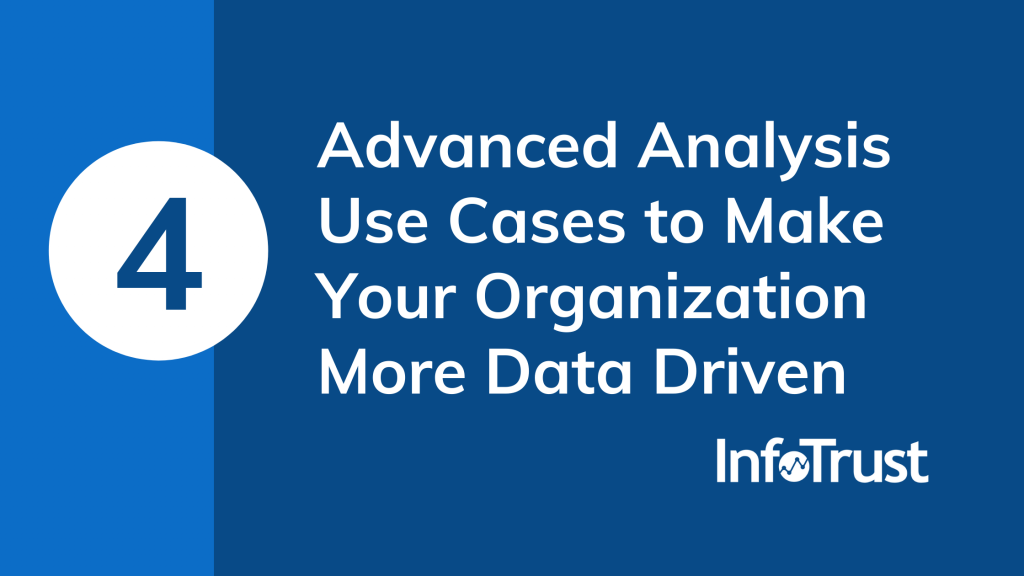Step beyond what’s included in the analytics user interface (UI) and get started with some advanced analysis. While analytics UIs provide a lot of detail, they don’t tell you everything and you don’t always have the customizations that you need. That’s where advanced analysis comes in. Organizations getting started with these types of analysis are looking to gain further insights around their customers, website or app trends, or key business activities. Advanced analysis allows organizations to be more data driven and keep the customers’ wants and needs front and center.
The majority of the use cases below are using analytics or advertising data. In those instances, you’ll need to store the data in Google Cloud (or a cloud environment). In some cases, we recommend using data from your CRM in which case Google Cloud might not be a strict requirement.
Google BigQuery has a native integration to Google BigQuery for Google Analytics 360 (GA360) customers and Google Analytics 4 (GA4) customers. While we won’t get into any code today, you’ll need a basic understanding of Python or R to run the analysis use cases listed below.
Let’s take a look at four advanced analyses to help propel your organization forward.
Cohort Analysis
Objective: Understand customers and optimize marketing campaigns
Data source: Analytics data (Google Analytics, Adobe Analytics, etc.)
Cohort analysis is one method to group users together based on their behaviors. It is important to note that a cohort is a type of segment but it is not the same as a segment. A cohort is a group of users who performed a common behavior (interacted with an event, saw an ad, etc.) during the same time period. A segment is not required to be bound to a specific timeframe or event. A segment is a grouping of data based on your definition.
Some analytics platforms have limited cohort capabilities in their user interface. The benefit of using a tool like Google BigQuery is how much control you have over your analysis and the data points used. Cohort analysis is great for all businesses because they allow for the comparison of variables and changes between marketing initiatives. For businesses running on-site optimization, this could be understood as what change(s) lead to increased conversions.
Cohort analysis can be used in many aspects of marketing and sales such as to understand return on investment (ROI) and acquisition cost by marketing campaigns, determining customer retention, and learning which page types (blogs, products, services, etc.) lead to conversions. Cohort analysis is a great way to start digging into hypotheses and setting up tests for advertising campaigns or on-site optimizations. Cohort analysis is also one way of building audiences for advertising.
Path/Sequencing
Objective: Uncover the key on-site user paths to assist with website optimization
Data Source: Analytics data (Google Analytics, Adobe Analytics, etc.) and advertising data (Ads Data Hub)
How do users get from point A to point D? For some organizations, this question is straightforward; for others, it’s different for each user. Performing a path analysis allows companies to understand the top paths that users are taking in order to complete a key on-site (or offsite) action.
The best part about performing a path analysis in BigQuery is the ability to add in additional data sources stored in the cloud. For example, companies can combine Ads Data Hub (advertising data) and Google Analytics data to understand the user journey from seeing a line item or campaign through to an on-site conversion. Now media teams and site optimization teams can work together to understand customer pain points (common drop-offs) and where to focus resources. One learning might be where to send (or not to send) paid search traffic when they first land on a website.
Attribution
Objective: Determine which pages or channels have the biggest impact in a user’s decision to convert
Data Source: Analytics Data (Google Analytics, Adobe Analytics, etc.) and advertising data (Ads Data Hub)
In marketing, there is a lot of talk about data-driven attribution, last click attribution, etc. It’s true that Google Analytics offers a data-driven attribution model for channels and campaigns. I’d highly recommend testing this out if you haven’t already. Attribution outside of Google Analytics goes further than marketing channels.
Recently, we performed an analysis around on-site attribution to help a client understand what page types were contributing to the overall conversion. The outcome of the analysis allows teams to help give credit to on-site pages such as blogs and identify ineffective paths that need improvement. Typically, these pages don’t convert a user but they might play a role in getting a user to convert.
Basket Analysis
Objective: Discover customer patterns and relationships within your website or product data
Data Source: Analytics Data (Google Analytics, Adobe Analytics, etc.) or CRM
Market basket analysis is a method that allows eCommerce companies to understand customers’ purchasing patterns. Analysis like this typically sheds light on product groupings and items that are commonly purchased together. While organizations can use data from an analytics platform like Google Analytics, it’s also possible to use CRM data for this type of analysis. The benefit of using CRM data is that this dataset is typically a company’s “source of truth”. In addition, CRMs store almost all customer and purchase information, some of which might not be included in the analytics platform.
Although this analysis is typically used in retail, it’s not exclusive to retail. In general, the analysis is looking for patterns of hidden relationships. For example, a local news website could use this analysis to understand which website categories people typically browse between (Local News & Sport or Business and Traffic). Basket analysis outputs can be used to recommend cross-sells, upsells, cross-promoting content, enhance personalized marketing, and more.
Remember, it’s important to continually update the analysis you run to ensure you continually make data-driven decisions. Good luck in your analysis.



